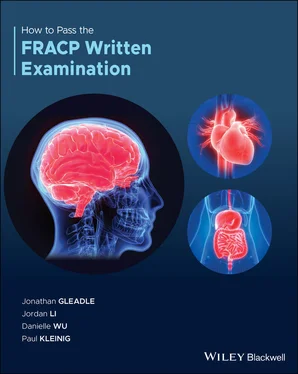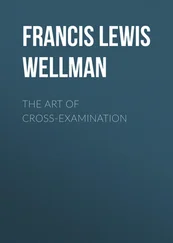In patients with severe ARDS, mortality is up to 46%. Long‐term sequelae for the survivors of ARDS include depression, skeletal‐muscle weakness, post‐traumatic stress disorder, and cognitive decline. Identification and treatment of the underlying cause(s) of ARDS is the first priority in the care of the patients with this condition.
The volumes of the aerated lungs are reduced in patients with ARDS. Using lung‐protective invasive mechanical ventilation with lower tidal volumes and airway pressure has been reported to reduce ventilator‐associated lung injury and mortality. Avoidance of fluid administration following reversal of shock has been shown to reduce mortality in a large randomised trial. IV albumin administration was not associated with reduced mortality in a large randomised trial in patients with ARDS. Currently, no pharmacologic therapy has been shown to reduce short‐term or long‐term mortality in patients with ARDS. A recent trial shows that infusion of muscle relaxant for 48 hours may improve oxygenation but does not improve mortality. Placing the patient in the prone position for moderate to severe ARDS may reduce mortality. Introducing inhaled nitric oxide therapy improves oxygenation but does not improve mortality.
Distinguishing between initial fluid resuscitation for shock and maintenance fluid therapy is important. Early aggressive resuscitation for associated circulatory shock and its associated remote organ injury are essential. However, several small trials have demonstrated improved outcome for ARDS in patients treated with diuretics or dialysis to promote a negative fluid balance in the first few days. Primary ARDS due to aspiration, pneumonia, or inhalational injury can be treated with fluid restriction. Secondary ARDS due to sepsis or inflammation requires initial fluid and potential vasoactive drug therapy to stabilize the patient.
An ARDS Clinical Trials Network study of a fluid‐conservative strategy versus a fluid‐liberal strategy in the management of patients with ARDS found no statistically significant difference in 60‐day mortality between the two groups 72 hours after presentation with ARDS. However, patients treated with the fluid‐conservative strategy had an improved oxygenation index and lung injury score and an increase in ventilator‐free days, without an increase in non‐pulmonary organ failures.

Thompson B, Chambers R, Liu K. Acute Respiratory Distress Syndrome. New England Journal of Medicine. 2017;377(6):562–572.
https://www.ncbi.nlm.nih.gov/pubmed/28792873
2. Answer: C
This patient’s clinical presentation and signs are consistent with cardiac tamponade which is a rare complication after pacemaker insertion. The diagnosis of cardiac tamponade is clinical and requires prompt recognition. Echocardiogram is the best imaging modality to use at the bedside, as it can confirm the presence of a pericardial effusion, determine its size, and whether it is causing compromise of cardiac function such as right ventricular diastolic collapse, right atrial systolic collapse, plethoric inferior vena cava (IVC). The commonest ECG finding of cardiac tamponade is sinus tachycardia. ECG may show low voltages or electrical alternans, which is the classic ECG finding in cardiac tamponade. A CXR may show an enlarged heart and may strongly suggest pericardial effusion if a prior CXR is available for comparison. CT chest can also detect pericardial effusion.
Differential diagnosis includes large pleural effusion, pneumothorax, pulmonary embolism, constrictive pericarditis, CCF, and shock.
Cardiac tamponade is a medical emergency. The urgent treatment of cardiac tamponade is the removal of pericardial fluid/blood to relieve the pressure surrounding the heart. This can be done by performing a needle pericardiocentesis at the bedside, performed either using traditional landmark technique in a sub‐xiphoid window or using a point‐of‐care echocardiogram to guide needle placement in real‐time. Surgical options include creating a pericardial window or removing the pericardium.
Complications of pacemaker insertion may occur during the immediate or early post‐insertion period and can be related to (ii) venous access (pneumothorax, haemothorax, air embolism, haematoma, arterial puncture, wound healing problems, infection, pain), (ii) the pacemaker lead (cardiac perforation, tamponade, malposition or dislodgement of the lead), (iii) or the generator device. Late complications are related to infections, thrombosis, endocarditis, pulmonary embolism, superior vena cava (SVC) syndrome (due to thrombus formation and/or fibrosis of the pacing wires within the SVC), and pericarditis.

Mahadevan V, Agrawal H. Cardiac tamponade – Symptoms, diagnosis, and treatment | BMJ Best Practice [Internet]. Newbp.bmj.com. 2019 [cited 22 August 2019]. Available from: https://bestpractice.bmj.com/topics/en-gb/459
3. Answer: D
Carbon monoxide (CO) poisoning causes a large number of deaths due to intentional self‐injury and non‐intentional injury related to fires. Chronic CO poisoning is more commonly encountered as a result of faulty heating. CO binds to heme products with much greater affinity than oxygen and reduces oxygen delivery to tissues. However, this mechanism only accounts for some of the toxicity of CO, and as a result, carboxyhaemoglobin levels do not necessarily correlate with severity of toxicity. CO poisoning also produces toxicity by binding many intracellular heme products resulting in impaired cellular function. For example, CO inhibits mitochondrial respiration by binding ferrous heme, which is the active site on cytochrome c oxidase complex IV. CO inhibits platelet function, causes inflammation, central demyelination and global brain ischaemic injury, through acidosis and oxidative stress. CO poisoning can be diagnosed by consistent symptoms, history of recent CO exposure, and elevated carboxyhaemoglobin levels. Conventional pulse oximetry cannot distinguish between carboxyhaemoglobin and oxyhaemoglobin, so pulse oximetry usually returns normal values. Treatment focuses on accelerating the dissociation of CO through oxygen therapy. Whilst hyperbaric oxygen has been shown to accelerate this process faster than normobaric oxygen, it has not shown improved clinical outcomes. Long term sequelae of CO poisoning are common, with cardiovascular toxicity and neurological deficits occurring most frequently.

Rose J, Wang L, Xu Q, McTiernan C, Shiva S, Tejero J et al. Carbon Monoxide Poisoning: Pathogenesis, Management, and Future Directions of Therapy. American Journal of Respiratory and Critical Care Medicine. 2017;195(5):596–606.https://www.atsjournals.org/doi/full/10.1164/rccm.201606‐1275CI
4. Answer: B
Disseminated intravascular coagulation (DIC) is an overactivation of the coagulation cascade resulting in consumption of coagulation factors, and disordered haemostasis, manifesting as either coagulation or bleeding. DIC affects about 35% of patients who have sepsis. Depending on the cause, DIC manifests in different ways. This is thought to be due to differential effects of the causative pathology on fibrinolysis and procoagulant factors. For example, DIC caused by trauma or acute promyelocytic leukaemia tends to result in bleeding, whereas sepsis most frequently causes multi‐organ dysfunction through microembolic damage. Obviously, the treatment of these differentially manifesting pathologies will differ. The typical laboratory parameters in DIC are decreased platelet count, increased prothrombin time, increased (often dramatically) D‐dimer, and decreased fibrinogen. However, the individual components of laboratory diagnosis are not all required and DIC can go undiagnosed if this possibility is not recognised. For example, low fibrinogen is only present in around 30% of DIC associated with sepsis. One of the most thoroughly validated scoring systems for the diagnosis of DIC is that of the International Society of Thrombosis and Haemostasis (ISTH), which gives weight to the above‐mentioned laboratory parameters and a score of 5 or more denotes DIC. There is still some controversy surrounding the supportive management of DIC (other than addressing the underlying cause), but treatment strategies in sepsis induced DIC include replacing factors, activated protein‐C and systemic anticoagulation.
Читать дальше















